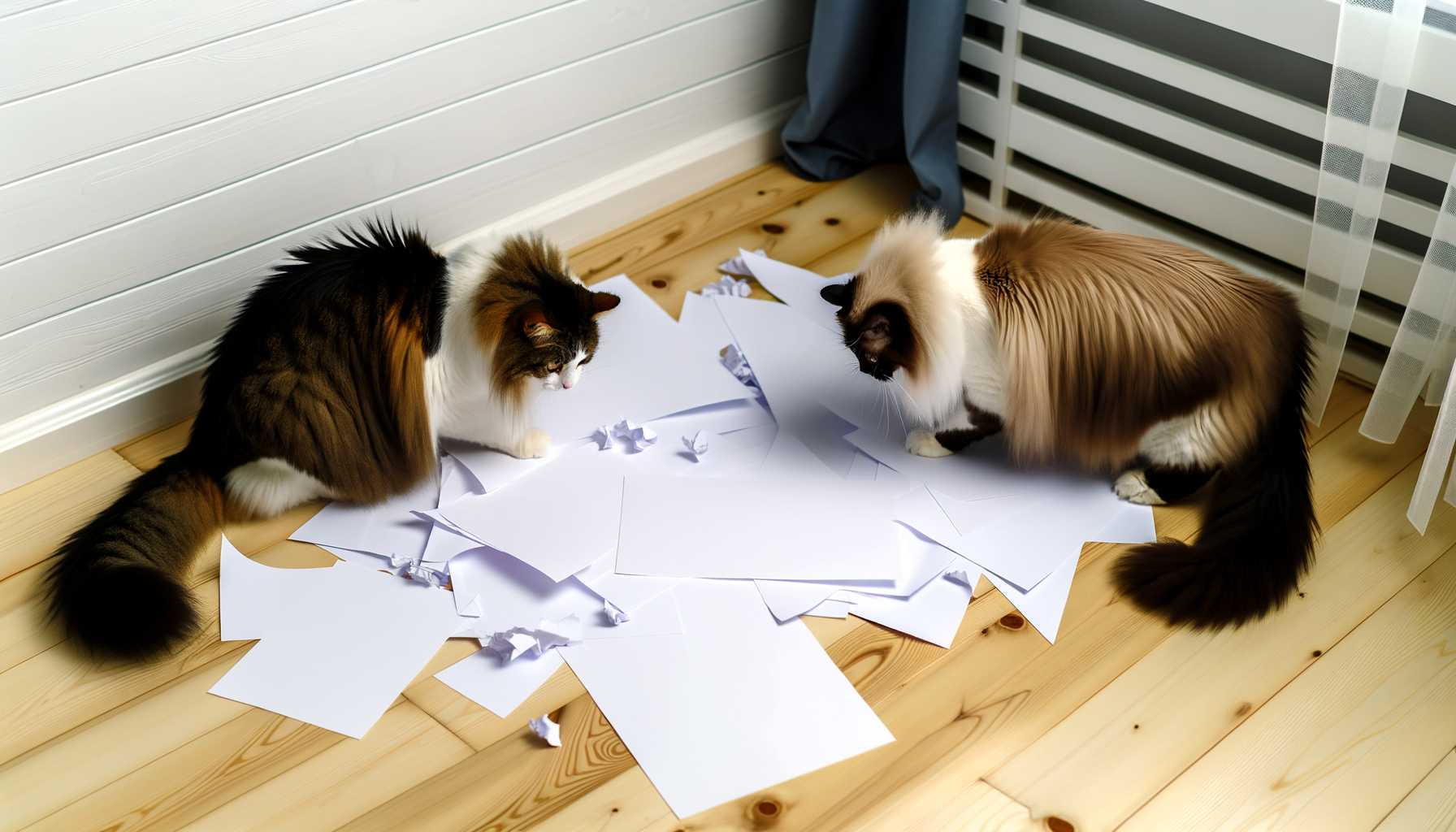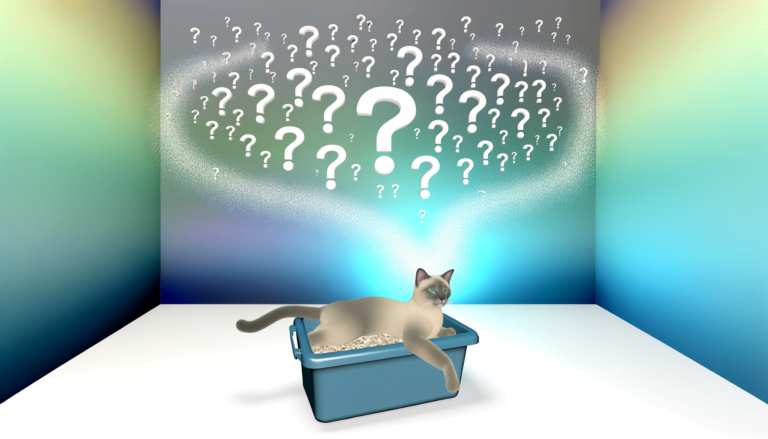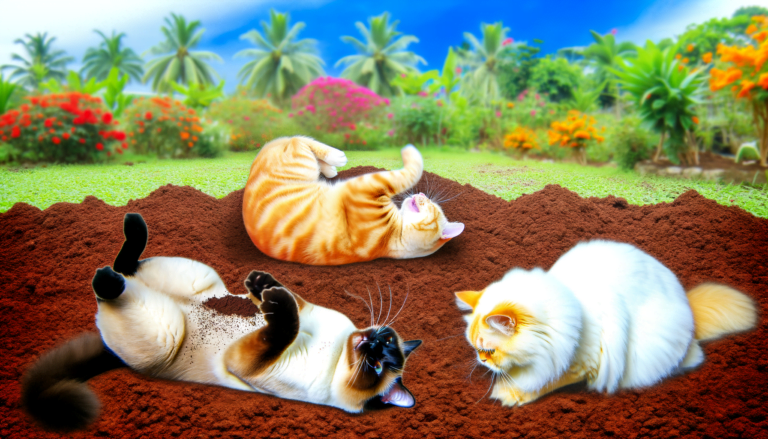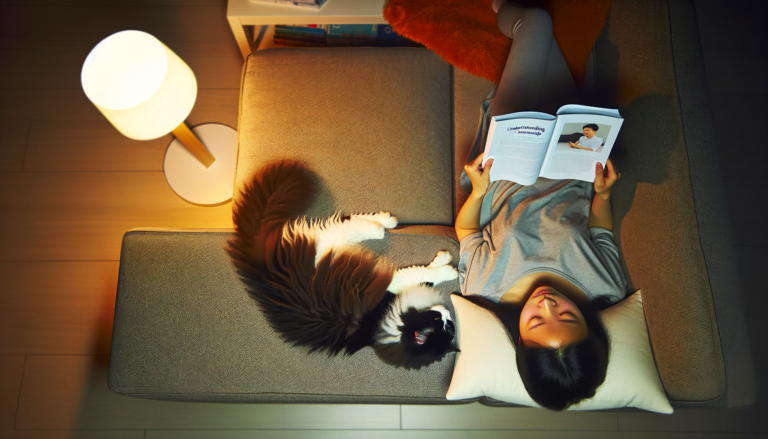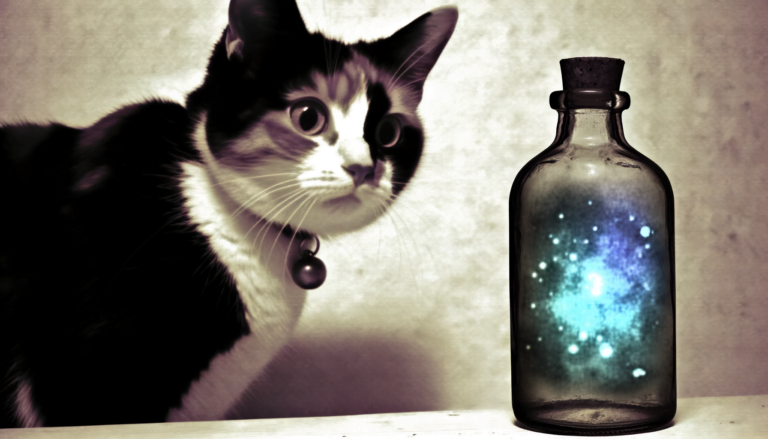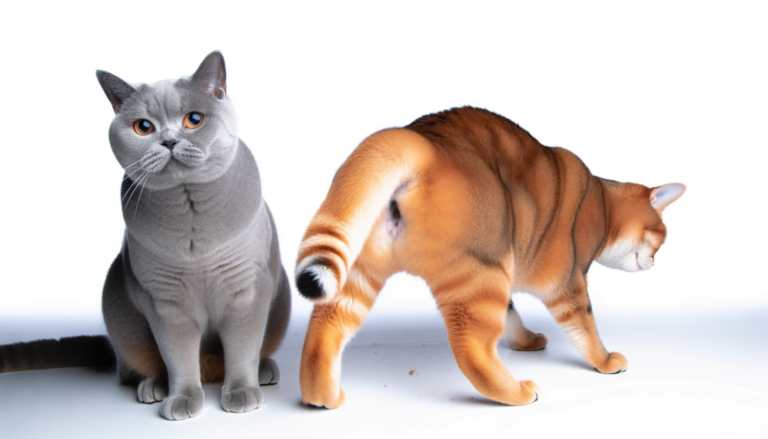Decoding Feline Fascination: Why Cats Can’t Resist Paper
Cats are known for their peculiar affection towards paper, largely based on its texture, sound, and the represented territory. The rough surface of paper appeals to feline paws, providing a satisfying feeling akin to a scratching post. Furthermore, paper’s crinkly sounds can attract cats due to their instinctive curiosity. Additionally, in the cat world, occupying a specific spot, like a piece of paper laid out on a flat surface, signifies territorial ownership, thus fulfilling their instinctive desire to claim and control their space.
Marking Territory: Paper as a Medium for Cats
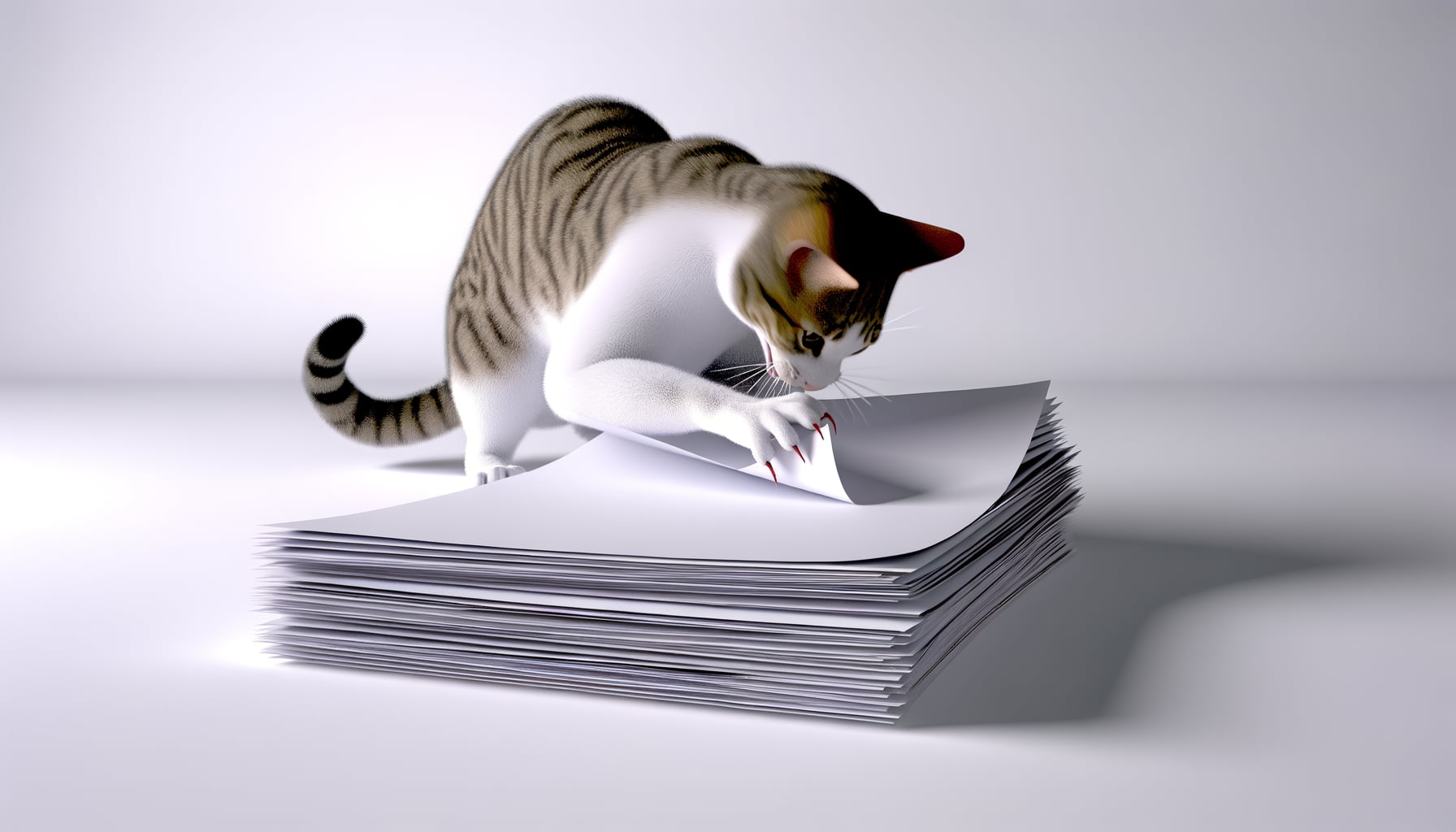
Our lovable felines have a unique method of declaring their territory, and paper happens to be a preferred medium. When cats rub their bodies against paper, they are essentially stag
ing a territorial claim. Cats carry scent glands located around their face, tail, and paws, which leave behind their unique signature scent. Paper, being a porous material, easily captures and retains these scents.
Yet, cats marking their territory is not solely an act of dominance or possession. It’s also a form of communication. A cat depositing scent marks may be leaving pheromonal messages for other cats. This could be a sign of a comfortable and secure environment. In many ways, paper serves for our feline friends a similar purpose that a bulletin board might for us.
Paper as a territorial marker also highlights an ingenious aspect of cat psychology. Relative to size, cats live in a ‘giant’ world. A mere piece of paper provides a manageable space they can comfortably control. So next time you see your cat lying contentedly on a newspaper, remember, it’s not just a papery bed — it’s a claimed territory.
Environmental Influence and Curiosity: Cats on Paper Explained
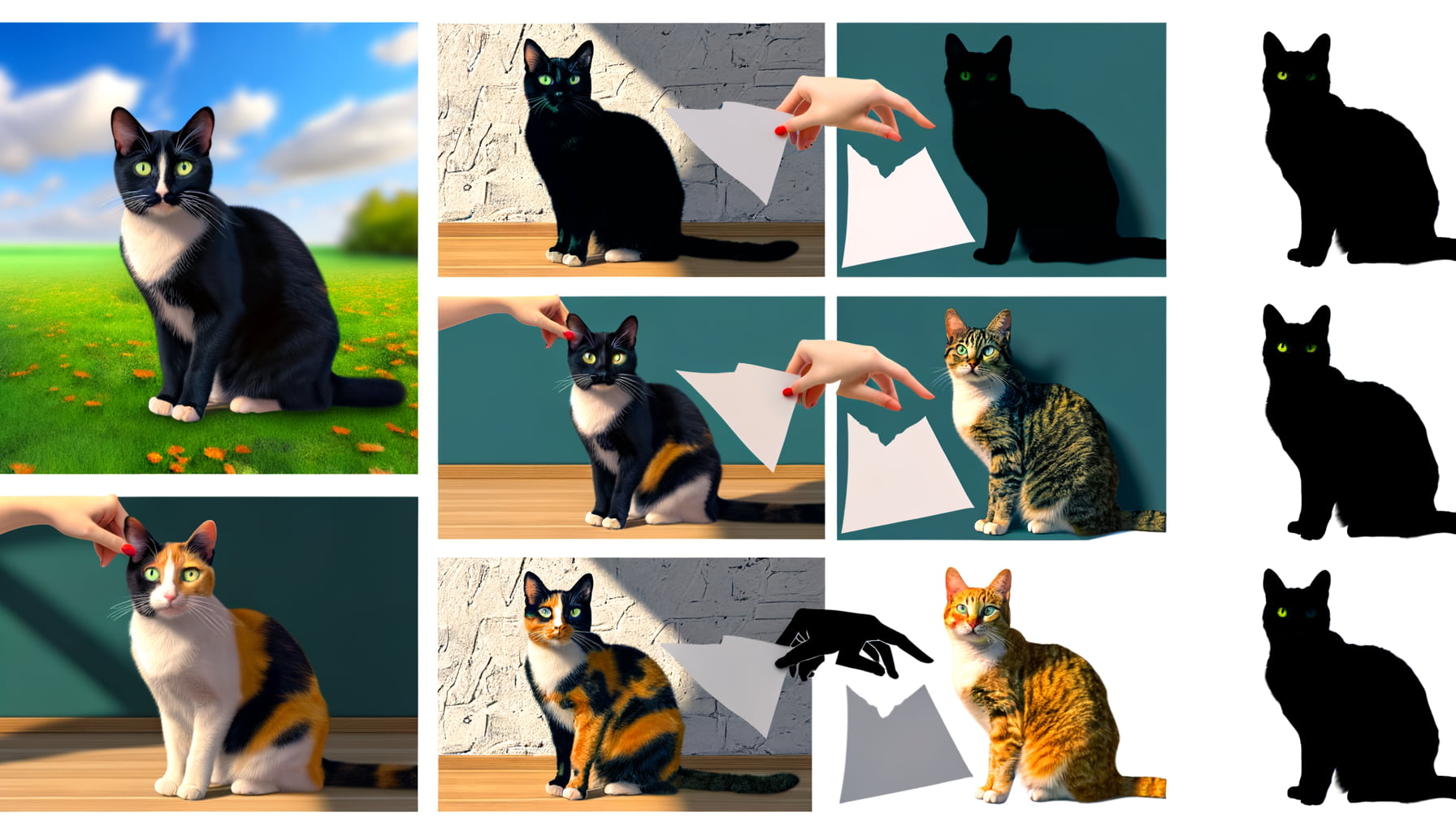
When discussing the relationship between cats and paper, it’s hard to ignore the role of environmental factors and inquisitiveness. Cats, with their strong survival instincts and adaptive nature, are keenly aware of their surroundings. Paper, in its abundant and versatile forms, easily captures their attention. The sounds it makes can mimic some natural phenomena in a cat’s instinctual world, such as rustling leaves or scampering prey. Brown wrapping paper or plain newspaper offers tactile stimulation under their paws, akin to outdoor surfaces, stimulating a sensory interaction that provokes and satisfies curiosity.
Furthermore, common household paper items offer cats a refreshing novelty value. Unlike many of their toys, paper items frequently change, thereby sparking their natural curiosity. From a grocery bag to a printing paper, each provides unique properties, keeping the feline world fresh and exciting. Ultimately, these environmental factors and the innate curiosity of our feline friends combine to enhance their fascination with all things paper.
In conclusion, understanding this paper-related behavior of cats involves acknowledging the environmental influence and acknowledging their deep-seated curiosity. It’s not just about the surface they can mark or an object they can play with; it’s about a medium that represents change and stimulation. Therefore, the enthralling dance between cats and paper goes far beyond texture and sound, delving into the cats’ interaction with their environment and their relentless curiosity.
The Texture and Sound Appeal: Why Cats Prefer Paper
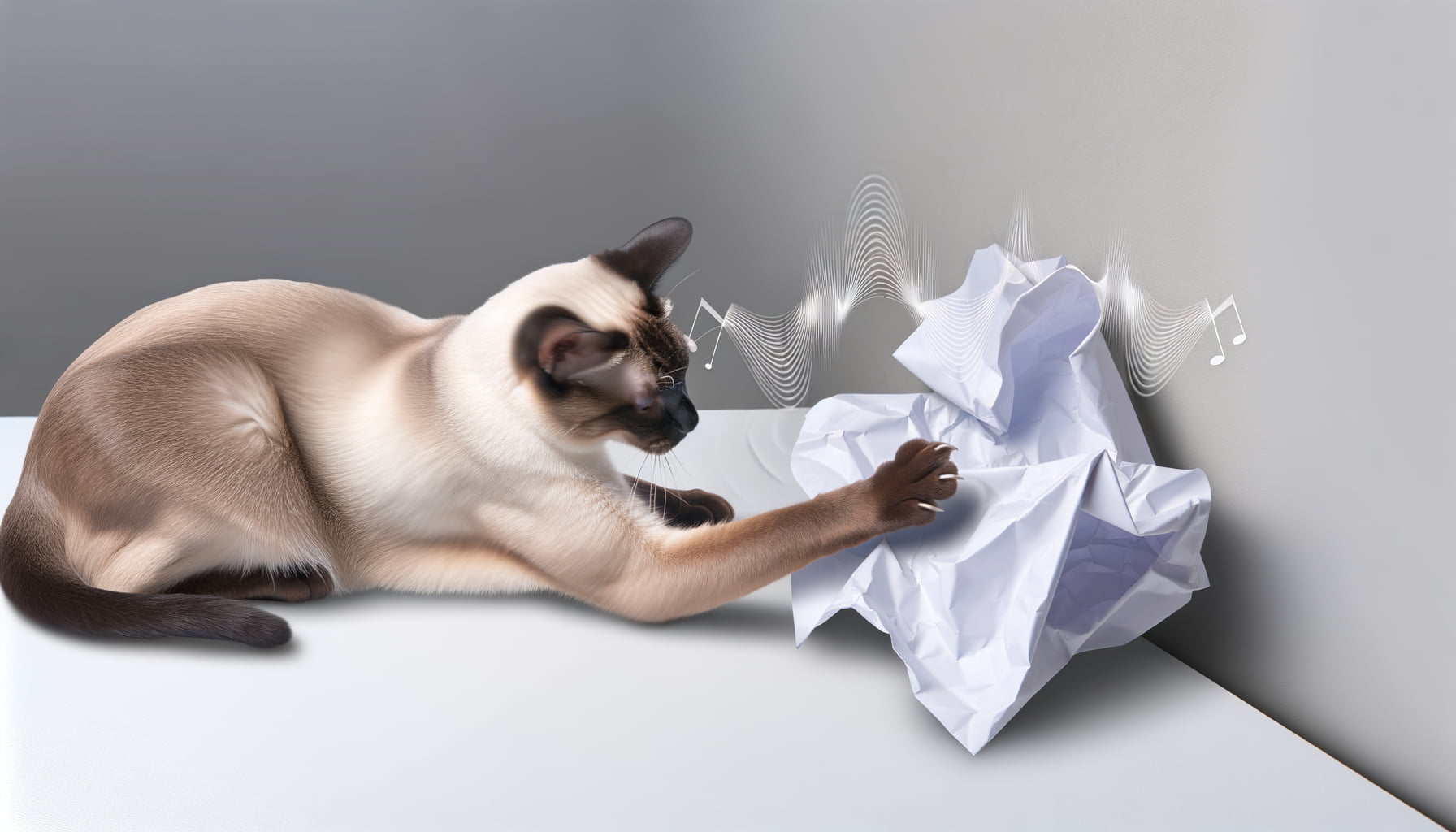
The texture of paper often prompts curiosity in cats. Unlike many other surfaces, paper provides a unique roughness that cat paws find intriguing. This texture interaction encourages play, exploration and even comforting kneading behaviours. It is vital to understand that this satisfies their inherent need for tactile stimulation.
In addition to the texture, cats also find appeal in the sound paper makes. The crinkling noise produced when they step on or play with paper fascinates them. It creates an auditory feedback that can be likened to the rustling sounds of prey in the wild, stimulating their hunting instincts and providing a form of auditory enrichment.
Furthermore, as crepuscular creatures most active during twilight, cats rely more on their vibrant sense of touch and hearing than their vision. The unique combination of texture and sound that paper affords plays a crucial role in their preference for paper, serving as an engaging sensory experience. Consequently, providing cats with paper can contribute positively to their environmental enrichment.
Understanding Cat Behavior: The Attraction to Paper

Cats are known for their distinct and often mysterious behaviors. Their attraction to paper is a unique display of such enigmatic conduct. There are several compelling reasons underlying this behavior. One of the primary reasons is their acute sensory perception. Cats consistently exhibit a heightened sensitivity to touch, sound, and even the mere crinkling of paper. This stimulation often triggers a playful response, causing them to paw, pounce, and play with paper objects.
Similarly, cats find fascination in the unpredictable movement induced by paper. A piece of paper, lightweight and mobile, can flutter and fly unpredictably with the slightest draft or movement. This unpredictable motion is inherently intriguing to a cat’s predator instincts, causing them to chase and trap the ‘prey’. This aligns with the domestic feline’s natural inclination towards curiosity and puzzle-solving, creating a lighthearted form of play.
Finally, paper serves as an excellent medium for marking territory, another primary behavior of felines. Through scent glands in their cheeks and paws, cats will often rub against or scratch paper to disperse their scent, making it a valuable tool for facilitating this need. This not only fulfills their competitive urge to lay claim but also provides a cathartic outlet for their energy. Understanding these factors can help cat owners better appreciate their pet’s fascination with paper.
Conclusion
So why do cats have such a fascination with paper? From the crinkle of a grocery bag to the allure of a fresh sheet, felines seem drawn to this simple material time and time again. While researchers continue to study this behavior, one thing is clear – cats’ love for paper remains a charming and enigmatic aspect of their nature.
As cat owners, we may never fully understand the allure of paper for our furry friends. But perhaps that’s part of the magic of these mysterious creatures. So next time you see your feline companion pawing at a crumpled receipt or cardboard box, take a moment to appreciate their quirky preferences and the joy they bring into our lives.
